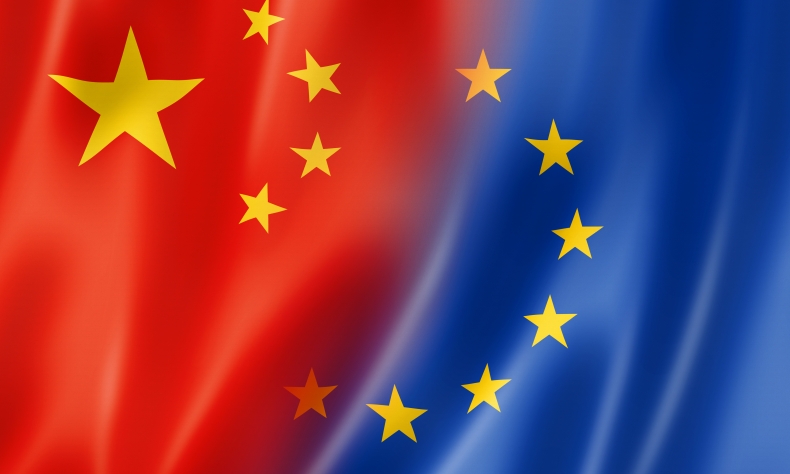New Start for EU-China Relations?

Only time will tell how much the EU and China can cooperate but global shocks like the pandemic and the huge challenge of climate change make it blatantly clear that cooperation is warranted and urgent.
After more than seven years of negotiations, a final agreement between China and the European Union (EU) on a Comprehensive Agreement on Investment (CAI) was reached on December 30, right before the deadline agreed at the EU-China Summit in April 2019.
The deal is clearly important politically as it happens right before President-elect Biden takes office. It clearly shows to the US that the EU wants to keep the door open to China and is not going to follow US instructions blindly. The same is true for Asia, as shown by the trade deal reached last November among ASEAN countries, Australia, South Korea, Japan and China, namely the Regional Comprehensive Economic Partnership (RCEP).
While the political signaling is important, the actual economic importance of the deal is more limited. To start, the purpose of CAI is not to facilitate trade, specifically, since its scope is much narrower than a free trade agreement. In fact, CAI focuses on foreign direct investment in both directions: from Europe into China but also from China into Europe. It also includes some more general aspects of global governance, such as climate change but in a relatively loose way.
Within that narrower scope the main objective, from the European perspective, has long been to improve market access for European companies operating- or intending to operate in China. The underlying assumption is reciprocity was lacking in how open the European Single Market was for Chinese investors versus how open the Chinese market remains for foreign investors.
The crux of the matter is that China remains less open also after signing this agreement, so no full reciprocity has been achieved but there has at least been an improvement in market access. Part of the improvement is multilateral and not necessarily only for Europe, based on China’s recently enacted Foreign Investment Law.
Beyond that, the EU has managed to grant a slightly better market access to some sectors. As regard China’s liberalization efforts within the new agreement, the cornerstone of the liberalization measures is imbedded in the recently approved Foreign Investment Law. This equates to China’s relaxing non-tariff barriers and to move to a “Negative List” of protected sectors where foreign investors cannot access or gain control while the others remain open. As for the sectors for which the EU has acquired a better access than that granted globally, a few things need to be noted.
On electric cars, European companies can operate with full control if some requirements are fulfilled. For the telecommunications sector, the 50 percent cap remains but at least there are more venues for collaboration, including cloud services. Finally, for private hospitals, European investors can run whole-owned hospitals in 10 major cities in China.
Market access is not the only request aspect that needs to be tackled to achieve a certain level of reciprocity. As regards the pervasive role of SOEs, both the US in its negotiations with China for the Phase One deal have tried to incorporate a measurable definition of how distortive the presence of SOEs might be but it has not been possible yet. Down the road, it would be interesting both for China’s reform efforts and for European interests to work on a workable concept on competitive neutrality so as to be able to measure the distortions created by SOEs and address them.
Until that moment, the China-EU deal offers an interim solution by which China commits to increasing the transparency regarding subsidies for the service sector. Progress could be made in the future to include the industrial sector as well, since most of the subsidies are granted there.
Another important point is investor protection. China’s new Foreign Investment Law partially addresses EU concerns, providing clearer legal grounds for more effective protection of foreign investor’s rights (including better intellectual property rights protection as prohibits forced technological transfer). Still, the EU-China deal includes a state-to-state dispute mechanism for some of the chapters, which is welcome.
The last point to analyze is whether the CAI corresponds to the EU’s expectations of higher quality deals as have been the case for the lasts signed by the EU. One of the key points is sustainability both as regards environmental goals and labor provisions.

On climate change, China recent targets for 55 percent reduction of emissions by 2030 and carbon neutral by 2060. Labor standards instead have been one of the sticking points, but an agreement has been finally reached. It remains to be seen whether it will be enough for the agreement to be ratified by the European Parliament.
All in all, one could conclude that CAI might not substantially change EU-China economic relations but it is an important political step for the EU to show its intention to remain balanced between the US and China. Still, more will need to be done to improve EU’s market access and especially the level playing field in China’s market and reciprocity for EU companies but this could be the start of a long journey.
The truth of the matter is that true cooperation is only achieved once the benefits of the cooperation can be perceived. Only time will tell how much the EU and China can cooperate but global shocks like the pandemic and the huge challenge of climate change make it blatantly clear that cooperation is warranted and urgent.
The author is Senior Research Fellow at Bruegel, Chief Economist for Asia Pacific at NATIXIS.
The article reflects the author’s opinions, and not necessarily the views of China Focus.
 Facebook
Facebook
 Twitter
Twitter
 Linkedin
Linkedin
 Google +
Google +










